Mitä akkuja käytetään Bessissä?
Kun tutkit akun energian varastointijärjestelmien maailmaa (BESS), Peruskysymys tulee mieleen: Mikä on todella sisällä? Mikä on ydinakkutekniikka, joka tallentaa niin tehokkaasti energiaa aurinkopaneeleistasi tai ruudukosta, valmis virtaan kodisi tai yrityksiäsi, kun tarvitset sitä eniten?
Suurin osa nykyaikaisesta modernista Bessistä, Asuinpaikasta massiivisiin hyötyprojekteihin, käyttää Litiumioniakut. Erityisesti, Paikallisen energian varastointiin liittyvä suositeltava ja hallitseva kemia on LFP (Litiumrautafosfaatti tai lifepo₄). Tämä tekniikka valitaan sen erinomaiselle yhdistelmälle turvallisuutta, erittäin pitkä käyttöikä, ja erinomainen vakaus, tekemällä siitä luotettavan kultastandardi, pitkäaikainen suorituskyky.
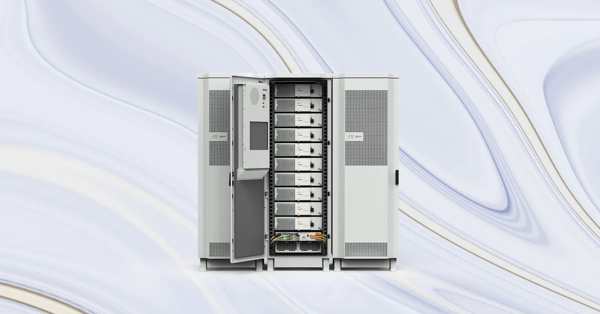
Gycx Solarissa, Sitoumuksemme turvallisuuteen ja pitkäaikaiseen arvoon asiakkaillemme on syy siihen, miksi suunnittelemme yksinomaan Bess -akut Ratkaisut LFP -tekniikan ympärillä. Se on todistettu, ammattimainen valinta. Tutkitaan lisää näistä tehokkaista järjestelmistä.
Mikä on Bess -akun elinikä?
Bess on merkittävä, Pitkäaikainen sijoitus kiinteistösi energiainfrastruktuuriin. Niin, Kriittinen kysymys on: kuinka kauan akun komponentti, järjestelmän sydän, Oikeastaan viimeinen?
LFP (Litiumrautafosfaatti) Akku modernissa Bessissä on suunniteltu kestävyydelle, odotetulla operatiivisella elinaikalla 10 to 20 vuotta. Käytön kannalta, Nämä paristot on arvioitu vaikuttavaksi 3,000 yli 6,000 Täydelliset varauksen purkamisjaksot. Tarjota asiakkaille luottamusta tähän pitkäikäisyyteen, Hyvämaineiset valmistajat tyypillisesti takaisin Bess-tuotteisiinsa kattavalla 10 vuoden takuulla.
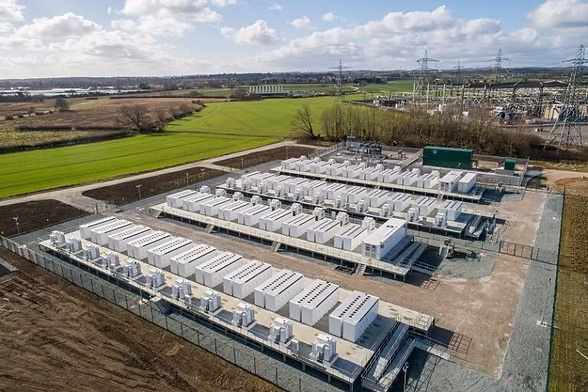
Sukeltaa syvemmälle: Pitkäaikaisen akun maked
Modernin Bess -akun vaikuttava elinikä ei ole sattumaa; Se on tulos erinomaisesta kemiasta ja älykkäästä järjestelmän suunnittelusta:
- LFP -kemia: LFP on luonnostaan vakaampi ja vankempi kuin muut litium-ioni-kemiat. Se kestää päivittäisen pyöräilyn stressin (lataaminen aurinkoenergian aikana päivällä, Yöllä purkautuminen) Monien vuosien ajan ilman merkittävää hajoamista. Akku 6,000 Syklit voisivat teoreettisesti kestää yli 16 vuosia yhdellä syklillä päivässä.
- Älykäs BMS: Integroitu akun hallintajärjestelmä (BMS) toimii huoltajana, Suojaa jatkuvasti akkukennoja stressiltä estämällä ylikuormituksen, ylikuormitus, ja varmistaa, että kaikki solut ovat tasapainossa.
- Lämmönhallinta: Bess on suunniteltu järjestelmä, jossa on sisäänrakennettu lämpöhallinta. Tämä on ratkaisevan tärkeää Singaporen kuumassa ja kosteassa ilmastossa. Pitämällä akkukennot niiden optimaalisen lämpötila -alueella, Järjestelmä estää kiihtyneen ikääntymisen, jonka lämpö voi aiheuttaa, suoraan myötävaikuttaa pidempään elämään.
- Takuu: Kymmenen vuoden takuu on laadukkaan asuinrakennuksen alan standardi. Se takaa tyypillisesti, että akku säilyttää tietyn määrän alkuperäistä kapasiteettiaan (ESIM., 70%) termin loppuun mennessä, Tarjoaa selkeän vertailukohdan pitkäaikaiseen suorituskykyyn.
Mitkä ovat Bessin kolme päätyyppiä?
On bess yhdelle kodille samalla tavalla kuin koko kaupungin sähköverkon tukemiseen? Ei ollenkaan. Bess -tekniikka on uskomattoman skaalautuva, Ja se on tyypillisesti luokiteltu kolmeen päätyyppiin sen sovelluksen ja koon perusteella.
Kolme päätyyppiä Bess ovat:
- Asunto Bess: Yksittäisille koteille suunniteltu pienimuotoiset järjestelmät.
- kaupallinen & Teollisuus- (C&minä) BESS: Keskimääräiset järjestelmät yrityksille, tehdas, ja muut kaupalliset kiinteistöt.
- Apuohjelma-asteikko: Massiivinen, Verkkoyhtiöiden omistamat ja ylläpitämät ruudukkotason järjestelmät.
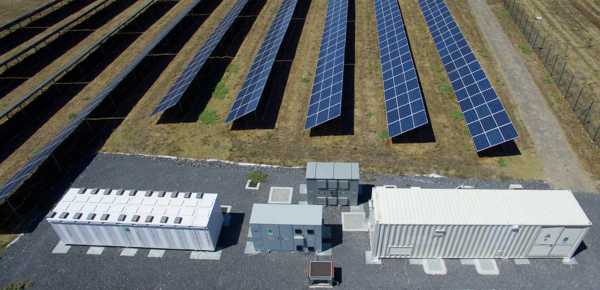
Sukeltaa syvemmälle: Kodistasi verkkoon
Katsotaanpa kunkin tyypin tarkoitusta:
- Asunto Bess:
- Koko: Tyypillisesti 5 kWh to 30 kWh.
- Tarkoitus: Päätavoitteena on maksimoida aurinkoeneroja (Päivän aurinkoenergian tallentaminen yöllä käytettäväksi, mikä on hienoa korkean sähkön tariffien hallintaan Singaporessa), Tarjoa varmuuskopiointi ruudukkokatkojen aikana, ja lisää energian riippumattomuutta.
- Muodostuskerroin: Yleensä tyylikäs seinälle asennettava yksikkö tai kompakti, pinottava telinejärjestelmä.
- kaupallinen & Teollisuus- (C&minä) BESS:
- Koko: -Sta 30 kWh useisiin megawattitunteja (MWH).
- Tarkoitus: Ensisijaisesti "huipun parranajoon" kalliiden kysyntämaksujen vähentämiseksi, Maksimointi paikan päällä aurinkoenergian käyttö, ja varmuuskopiovoiman tarjoaminen kriittiseen toimintaan.
- Muodostuskerroin: Usein suuret sisäkaapit tai ulkoilma-arvot.
- Apuohjelma-asteikko:
- Koko: Hyvin suuri, kymmenistä tuhansiin MWh: iin.
- Tarkoitus: Koko sähköverkon vakauttaminen. Ne säilyttävät valtavia määriä energiaa suurten aurinko- tai tuulipuistojen kanssa, Tarjoa ruudukkopalveluita, kuten taajuuden sääntely, ja korvaa saastuttaminen "Peaker" voimalaitokset.
- Muodostuskerroin: Tyypillisesti koostuu suurista riveistä, Konttien kokoiset yksiköt.
klo Gycx aurinko, Olemme erikoistuneet korkean suorituskyvyn asuin- ja c&I Bess -ratkaisut, jotka on räätälöity asiakkaidemme ainutlaatuisiin energiatarpeisiin Singaporessa.
Onko Bess AC tai DC?
Kun pääset Bessin teknisiin yksityiskohtiin, Kuulet termit AC (Vaihtovirta) ja DC (Tasavirta). On itse Bess yksi tai toinen? Vastaus on molemmat - se toimii älykkäänä siltana näiden kahden välillä.
Bess on pohjimmiltaan a DC -laite sen ytimessä, Koska paristot varastoivat ja vapauta DC -virta. kuitenkin, Se käyttää hienostunutta invertteria (virranmuuntamisjärjestelmä, tai tietokoneet) muodostaa yhteyden koteihimme ja verkkoon, käyttää Vaihtovirta. Kuinka Bess ja sen invertteri on kytketty aurinkopaneelijärjestelmään, määrittelee, onko kyse "AC-kytkettynä" tai "DC-kytketty" järjestelmä.
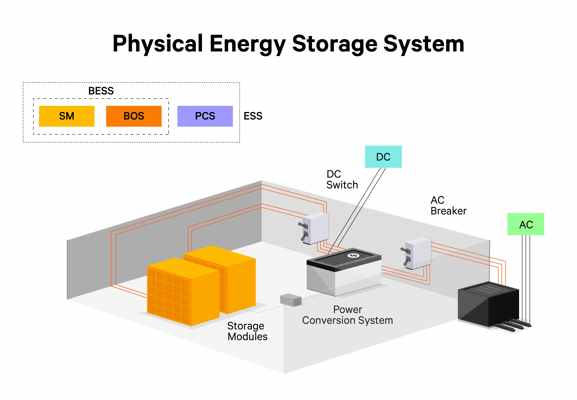
Sukeltaa syvemmälle: AC-kytketty vs.. DC-kytketyt järjestelmät
Tässä on nopea aurinkoarkkitehtuuri + säilytys-:
- DC-kytketty: Aurinkopaneelit (jotka tuottavat DC -voimaa) ja paristot (Mikä varastoi DC Power) on kytketty samalla tavalla hybridi -invertteri. Tämän avulla DC -virran paneelit latautuvat tasavirta -akut suoraan ja erittäin tehokkaasti. Tämä on usein suositeltava menetelmä uudelle, integroidut asennukset.
- AC-kytketty: Aurinkopaneeleilla on oma aurinkoinvertteri, ja akkujärjestelmässä on a toinen, erillinen akun invertteri. Molemmat muodostavat yhteyden talon vaihtovirtapaneeliin. Akun lataaminen aurinkoenergiasta, Auringon invertterin vaihtovirta muunnetaan takaisin DC: ksi paristolle. Tämä menetelmä on erinomainen akun jälkiasentamiseen kotiin, jolla on jo aurinkopaneelijärjestelmä.
Gycx Solar Story: "Kun asiakas kysyy meiltä tätä, Selitämme, että paras valinta riippuu heidän tilanteestaan. Singaporessa sijaitsevalle uudelle maa -alueelle aurinkoenergian ja varastoinnin yhdessä, Suosittelemme todennäköisesti erittäin tehokasta tasavirta-kytkettyä järjestelmää. 5-vuotias aurinkokunnan asiakkaalle, joka haluaa nyt lisätä varmuuskopion, AC-kytketty Bess on täydellinen ratkaisu."
Kuinka kauan bess kestää?
Olemme puhuneet akun komponentin elinkaaresta, Mutta entä koko Bess -yksikkö? Kuinka kauan voit odottaa koko järjestelmän kestävän?
Täydellinen bess on suunniteltu pitkään käyttöelämään, Mutta eri komponenteilla on erilaiset elinaikat. The akkumoduulit, Kuten olemme todenneet, Tyypillisesti viimeinen 10 to 20 vuotta. Toinen merkittävä elektroninen komponentti, the invertteri (tai tietokoneet), Yleensä on elinajanodote 10 to 15 vuotta. Siksi, Voit odottaa järjestelmästä erittäin pitkää operatiivista elämää, Mahdollisuus suunnitellaan invertterin vaihtamiseen kerran akun kokonaisessa elinaikana.
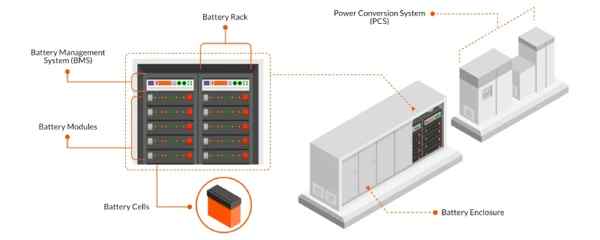
Sukeltaa syvemmälle: Järjestelmäkomponenttien elinikä
Bess on kokoelma korkealaatuisia komponentteja, jotka on suunniteltu toimimaan yhdessä:
- Akkumoduulit: LFP-akut ovat pisin osa, Kiitos tuhansille syklille suunnitellun vankan kemian ansiosta.
- Invertteri (Tietokoneet): Tämä on järjestelmän työhevonen. Monimutkaisena tehoelektroniikkakappaleena, joka hallitsee jatkuvasti suuritehoisia kuormia ja käsittelee lämpöä, sen komponentit (kuten kondensaattorit ja fanit) luonnollisesti ikä. A 10-15 Vuoden elinkaari on tyypillinen odotus korkealaatuisesta hybridi-invertteristä hyvämaineisesta tuotemerkistä. Monilla on kymmenen vuoden takuu vastaamaan akkua.
- Muut komponentit: Kotelo, johdotus, Turvallisuuskatkaisu, ja muut laitteistot ("Järjestelmän tasapaino") kaikki on suunniteltu kestämään koko järjestelmän koko elämän, edellyttäen, että ne eivät ole vaurioituneita.
- Pitkäaikainen suunnittelu: Tämä tarkoittaa, että 20 vuoden aikana, Sinun tulisi suunnitella alkuinvestointi ja yksi mahdollinen invertterin korvaaminen 10-15 vuoden merkki. Tämä on normaali osa hienostuneen energiajärjestelmän pitkäaikaista omistamista.
Gycx Solarissa, Rakennamme järjestelmiämme käyttämällä vain korkealaatuista Bess -komponentit1 johtavilta valmistajilta, joilla on vahvat takuut, Ja olemme avoimia asiakkaidemme kanssa jokaisen osan odotettavissa olevasta elinkaaresta. Tämä varmistaa, että sinulla on selkeä käsitys pitkäaikainen arvo2 ja sijoitussuunnitelma.
A Bess -akut Järjestelmä on älykäs, integroitu ratkaisu, joka on avain nykyaikaiseen energianhallintaan. Suoritettu turvallinen ja pitkäaikainen LFP-akut, Se on kestävä, Matalahuollon omaisuus, joka tarjoaa energiaturva- ja taloudellisia säästöjä. Ymmärtämällä sen komponentit ja miten se toimii, Voit tehdä itseluottavan investoinnin energia tulevaisuuteen.
Jos olet valmis tutkimaan, kuinka Bess voidaan räätälöidä kotiisi tai yritykseesi Singaporessa, Gycx Solarin asiantuntijatiimimme on täällä auttamassa. Ota yhteyttä ammatilliseen kuulemiseen tänään!
